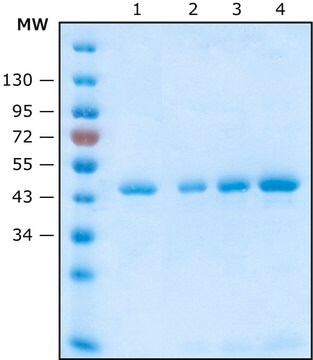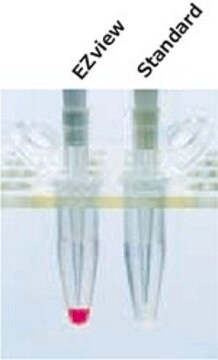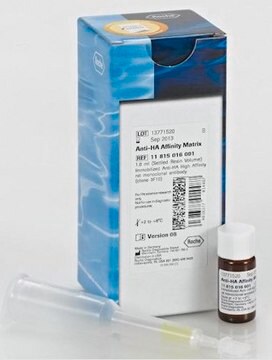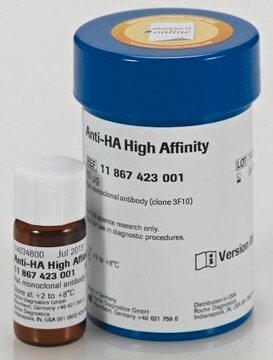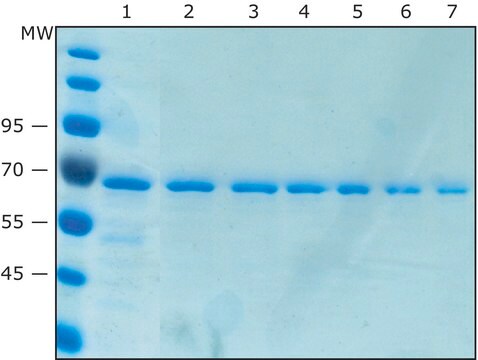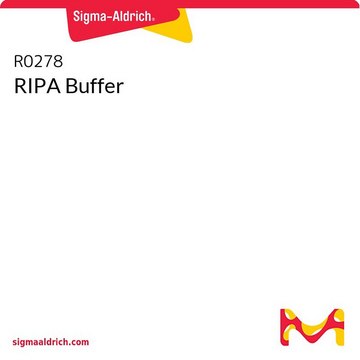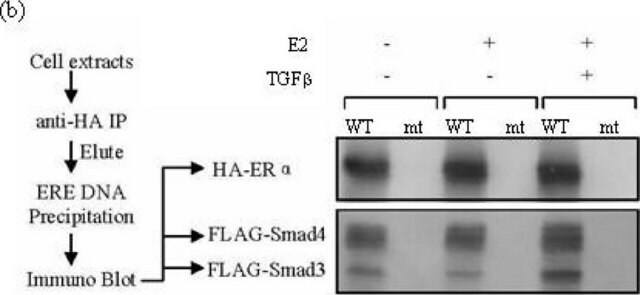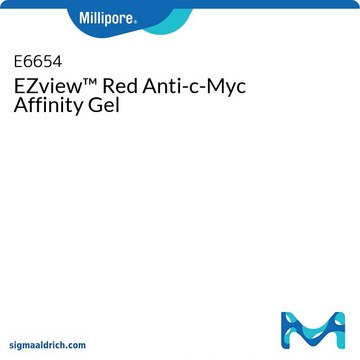IP0010
Anti-HA Immunoprecipitation Kit
Se connecterpour consulter vos tarifs contractuels et ceux de votre entreprise/organisme
About This Item
Code UNSPSC :
12352203
Nomenclature NACRES :
NA.56
Produits recommandés
Type de produit anticorps
primary antibodies
Niveau de qualité
Clone
monoclonal
Classe(s) chimique(s) de l'analyte
proteins (hemagglutinin)
Technique(s)
immunoprecipitation (IP): suitable
Température de stockage
2-8°C
Description générale
Anti-hemagglutinin (HA) Immunoprecipitation Kit is designed to recover maximum amounts of HA-tagged proteins in the immunoprecipitates. The process is carried out in mini-spin columns instead of microcentrifuge tubes to ensure easy washing of antigen-antibody-bound beads with minimal variability.
Application
Anti- hemagglutinin (HA) Immunoprecipitation Kit has been used for immunoprecipitation. It has also been used in in vitro acetylation assay from human embryonic kidney cell lines.
Caractéristiques et avantages
- Anti- hemagglutinin (HA) coupled beads enable high specific binding to HA-tagged fusion proteins
- Coupling of Anti-HA antibodies to the beads eliminates other preliminary and calibration steps
- Mini-spin columns enable the minimal loss of anti-HA-bound beads during washing
- The CelLyticTM M cell lysis reagent provides a high yield, rapid and efficient mammalian cell lysis
- Ready-to-use cell lysis reagent and 10X concentrated immunoprecipitation buffer
Vous ne trouvez pas le bon produit ?
Essayez notre Outil de sélection de produits.
Composants de kit également disponibles séparément
Réf. du produit
Description
FDS
Code de la classe de stockage
10 - Combustible liquids
Classe de danger pour l'eau (WGK)
WGK 3
Point d'éclair (°F)
Not applicable
Point d'éclair (°C)
Not applicable
Faites votre choix parmi les versions les plus récentes :
Déjà en possession de ce produit ?
Retrouvez la documentation relative aux produits que vous avez récemment achetés dans la Bibliothèque de documents.
Les clients ont également consulté
Podocyte-Specific Overexpression of Wild Type or Mutant Trpc6 in Mice Is Sufficient to Cause Glomerular Disease
Krall,P et al.
PLoS ONE, 5(9) (2010)
Paola Krall et al.
PloS one, 5(9), e12859-e12859 (2010-09-30)
Mutations in the TRPC6 calcium channel (Transient receptor potential channel 6) gene have been associated with familiar forms of Focal and Segmental Glomerulosclerosis (FSGS) affecting children and adults. In addition, acquired glomerular diseases are associated with increased expression levels of
Lin Jin et al.
PLoS pathogens, 12(5), e1005609-e1005609 (2016-05-19)
Bacterial AvrE-family Type-III effector proteins (T3Es) contribute significantly to the virulence of plant-pathogenic species of Pseudomonas, Pantoea, Ralstonia, Erwinia, Dickeya and Pectobacterium, with hosts ranging from monocots to dicots. However, the mode of action of AvrE-family T3Es remains enigmatic, due
Xiaolong Tang et al.
Nature communications, 12(1), 5058-5058 (2021-08-27)
Dietary interventions such as intermittent fasting (IF) have emerged as an attractive strategy for cancer therapies; therefore, understanding the underlying molecular mechanisms is pivotal. Here, we find SIRT7 decline markedly attenuates the anti-tumor effect of IF. Mechanistically, AMP-activated protein kinase
Satadru K Lahiri et al.
American journal of cancer research, 6(5), 910-923 (2016-06-14)
Krüppel-like factor 8 (KLF8) plays important roles in cancer and is strictly regulated by various post-translational modifications such as sumoylation, acetylation, ubiquitylation and PARylation. Here we report a novel phosphorylation of KLF8 by ERK2 responsible and critical for the stability
Notre équipe de scientifiques dispose d'une expérience dans tous les secteurs de la recherche, notamment en sciences de la vie, science des matériaux, synthèse chimique, chromatographie, analyse et dans de nombreux autres domaines..
Contacter notre Service technique